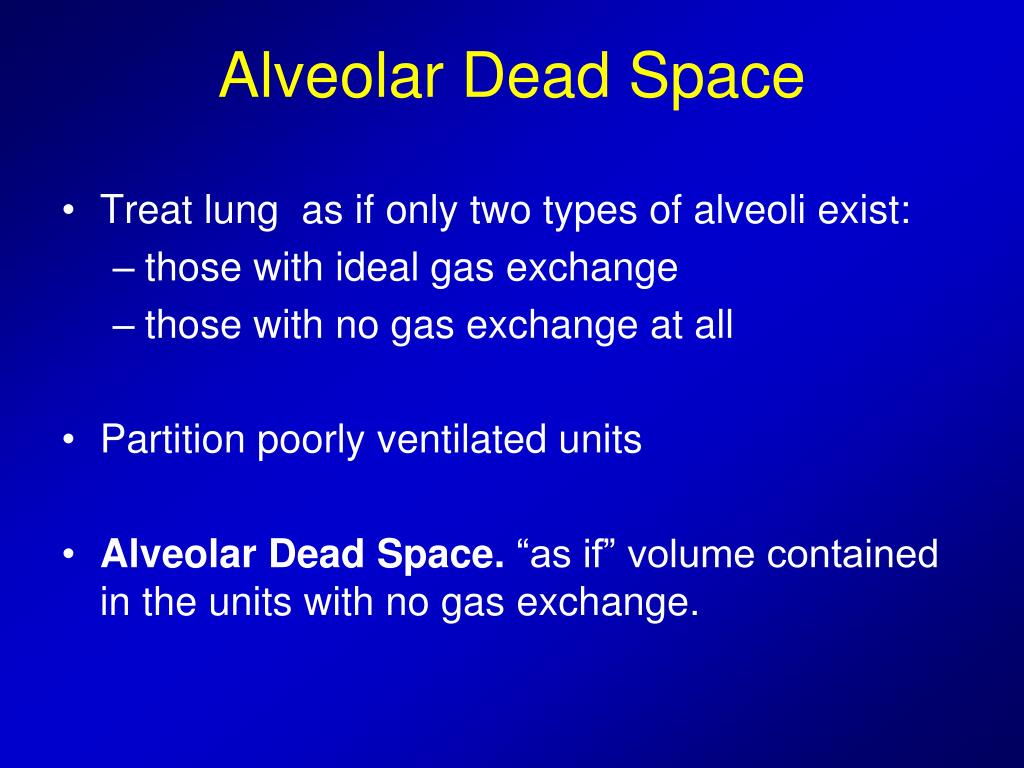
In healthy adults, the majority of the physiologic dead space is made up of anatomical dead space. This type occurs throughout the entire respiratory zone, which includes the following: Physiologic Dead Space = Anatomical Dead Space + Alveolar Dead Space Therefore, it is the sum of the anatomical and alveolar deadspace. Physiologic dead space is the total volume of air that does not participate in gas exchange. Air that reaches the alveoli but doesn’t participate in gas exchange is considered alveolar dead space.Īgain, this occurs when there is a lack of blood flow (i.e., perfusion) to this area. This can occur due to:Īlveoli are tiny air sacs in the lungs where gas exchange occurs. Alveolar Dead SpaceĪlveolar dead space is the volume of air that reaches the alveoli but does not participate in gas exchange due to a lack of perfusion. Note: Anatomical dead space is estimated to be approximately 1 mL/lb of ideal body weight.įor example, if a patient has an ideal body weight of 162 lbs, their anatomical dead space would be approximately 162 mL. The air that remains in this area that does not participate in gas exchange is the anatomical dead space.

When you take a breath in, air first enters through the nose and then travels down the trachea into the bronchi. The conducting airways are made up of the nose, trachea, and bronchi.

There are three primary types of dead space:Īnatomical dead space is the volume of air in the conducting airways that does not participate in gas exchange.


 0 kommentar(er)
0 kommentar(er)
